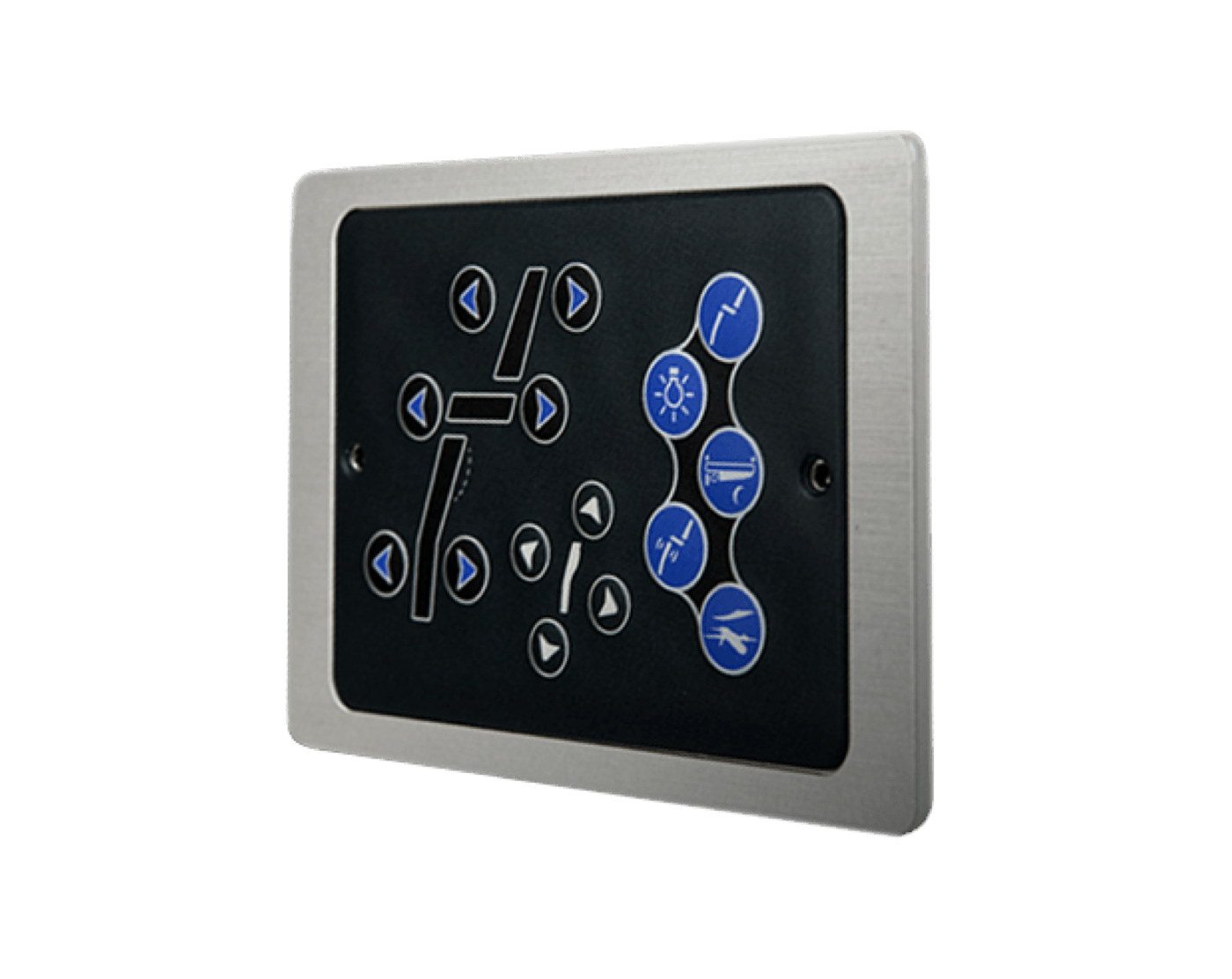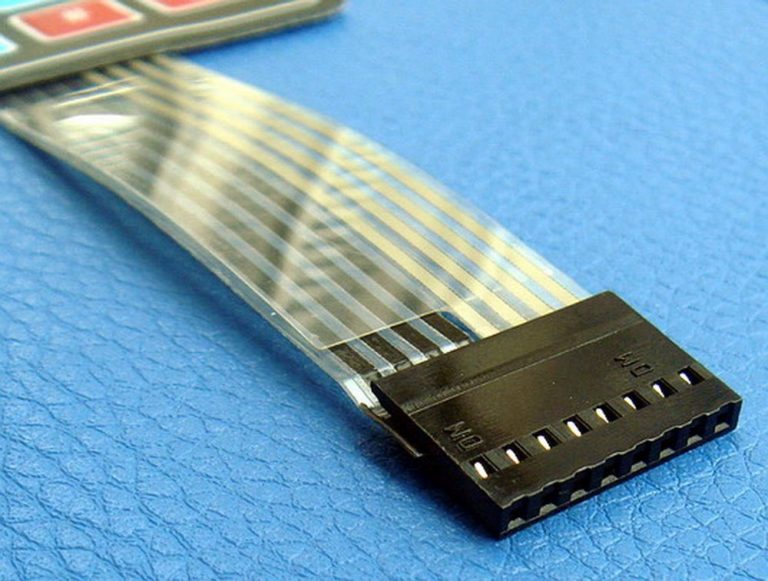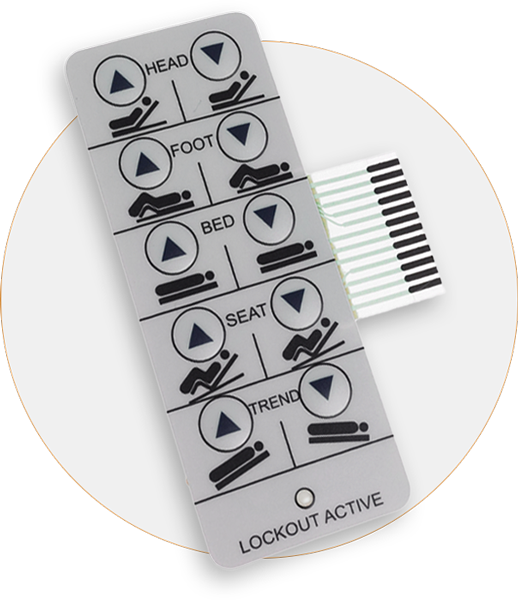Top manufacturers often use a skilled membrane switch manufacturer to deliver consistent results.
Top manufacturers often use a skilled membrane switch manufacturer to deliver consistent results.
Blog Article
All Concerning Membrane Layer Switch: Understanding Its Design and Capability
When you think regarding the control user interfaces in modern-day devices, membrane layer buttons frequently come to mind. Allow's explore what sets membrane layer switches apart from various other control systems.
What Are Membrane Layer Switches?

Membrane layer switches can also be customized concerning form, dimension, and graphics, permitting suppliers to create special user interfaces customized to certain products. On the whole, membrane layer switches play a substantial role in boosting customer experience across a wide range of applications.
Just How Membrane Layer Switches Over Job
When you press a key on a membrane layer button, it activates a straightforward yet effective device. The top layer, commonly made from flexible product, lowers onto a conductive layer beneath it. This activity bridges the space between conductive traces, completing an electric circuit. As quickly as the circuit shuts, it sends a signal to the gadget's controller, which interprets your input.
You'll discover that the tactile comments differs based upon the button design, providing either a soft click or a much more pronounced feedback. As soon as you release the trick, the membrane returns to its original placement, reopening the circuit and stopping the signal. This procedure takes place nearly immediately, ensuring a receptive customer experience.
Membrane switches are prominent as a result of their durability and resistance to dirt and moisture, making them optimal for numerous applications, from house appliances to medical devices. Understanding this operation assists you value their prevalent use.
Key Elements of Membrane Layer Switches
Recognizing the crucial parts of membrane buttons is basic for grasping their performance and design. At the core, you'll discover the visuals overlay, which supplies the visual user interface for customers. Beneath that, there's a spacer layer that separates the circuit layers, making certain that they don't make get in touch with till pressed. The circuit layer is where the magic occurs; it contains conductive traces that complete the circuit when you press the switch. One more crucial aspect is the sticky backing, permitting the switch to follow surface areas securely. The safety layer guards versus ecological elements and use, prolonging the switch's life-span. Each part plays a substantial duty in making certain trusted performance and individual interaction. By recognizing these parts, you'll get insight into exactly how membrane changes run and their significance in different applications.
Materials Utilized in Membrane Switch Layout
The performance and sturdiness of membrane layer changes greatly depend on the materials utilized in their style. You commonly come across polyester and polycarbonate as main substratums as a result of their exceptional strength and versatility. These materials stand up to scrapes and chemicals, making them optimal for demanding atmospheres.
The conductive layers commonly utilize silver or carbon, picked for their integrity and conductivity. membrane switch manufacturer. Silver gives premium efficiency, while carbon is a cost-effective alternative. For the overlay, you might take into consideration a matte or glossy coating, depending upon your aesthetic demands and individual experience
Adhesives play a necessary duty too; they bond layers firmly and ensure long life. Make particular to pick adhesives that stand up to environmental elements like temperature and moisture. Ultimately, don't overlook the significance of a good printing strategy for graphics, as it boosts both performance and visual appeal. Picking the right materials will ensure your membrane layer switch stands the test of time.
Design Factors To Consider for Membrane Layer Buttons
While making membrane layer buttons, it's vital to take right into account various factors that influence their functionality and user experience. Start by concentrating on the layout and switch size; make particular they're intuitive and simple to browse.
Don't overlook the graphic design; clear labeling and color contrast are significant for visibility. Validate your layout fits environmental variables, like dampness or temperature variations, which can affect efficiency. Bear in mind the significance of screening models with real individuals to collect responses and make necessary adjustments. This iterative procedure see this page assists you refine the style, validating it satisfies both functional and visual requirements effectively. By carefully taking into consideration these components, you'll develop a membrane layer switch that enhances functionality and fulfillment.
Applications of Membrane Switches
Membrane layer switches are versatile components located in various applications, from industrial tools to consumer electronic devices. You'll see their influence in equipments that need sturdy interfaces and in gadgets that profit from sleek layouts. Recognizing these applications aids you appreciate the capability and practicality of membrane layer buttons in day-to-day modern technology.
Industrial Equipment Use
When you're looking to enhance the performance of commercial devices, membrane layer buttons offer a trusted remedy that combines sturdiness with easy to use layout. These switches are perfect for severe settings, giving resistance to dust, wetness, and chemicals. Welcome membrane buttons to streamline your operations and improve total efficiency.
Consumer Electronics Combination
In the domain name of customer electronics, membrane switches play an essential duty in improving customer interaction and tool functionality. Membrane layer switches likewise ensure toughness and resistance to dust and dampness, expanding the lifespan of your electronics. By selecting membrane layer switches, you improve not simply the performance yet also the style of your gadgets, making daily interactions smooth and enjoyable.
Advantages and Downsides of Membrane Layer Switches
While membrane layer switches use an array of benefits, they also come with some downsides that you need to take into consideration. One substantial benefit is their portable style, making them ideal for space-constrained applications.

Membrane layer switches can have a shorter link life expectancy compared to mechanical switches, specifically under heavy usage. They can additionally be less responsive, which may impact user comments during operation. Stabilizing these pros and cons will aid you determine if membrane layer buttons are the ideal fit for your project.
Often Asked Questions
Just How Long Do Membrane Layer Switches Usually Last?
Membrane switches over normally last between 5 to one decade, depending upon use and ecological problems. You'll wish to review aspects like wear, exposure to wetness, and temperature level fluctuations to gauge their long life properly.
Can Membrane Switches Be Customized for Certain Styles?
Yes, you can personalize membrane switches to fit specific layouts (membrane switch manufacturer). You'll have the freedom to choose shades, forms, and layouts that match your task's needs, guaranteeing they blend perfectly with your general visual
What Is the Cost Variety for Membrane Layer Change Production?
The price range for membrane layer button manufacturing normally drops in between $1 and $10 per system, relying on aspects like design web complexity, amount, and materials. You can obtain quotes from manufacturers to locate the ideal option.

Are Membrane Changes Water Resistant or Resistant?
Membrane layer switches can be developed to be water-proof or resistant, depending on materials made use of and building and construction approaches. If you require them for damp atmospheres, assure you define those requirements during the design process.
Exactly How Do Membrane Layer Changes Compare to Conventional Switches?
Membrane buttons are generally thinner and extra versatile than typical buttons, providing a smooth layout. They're usually simpler to clean up and integrate, however may not offer the tactile responses you're used to with mechanical choices.
Verdict

Report this page